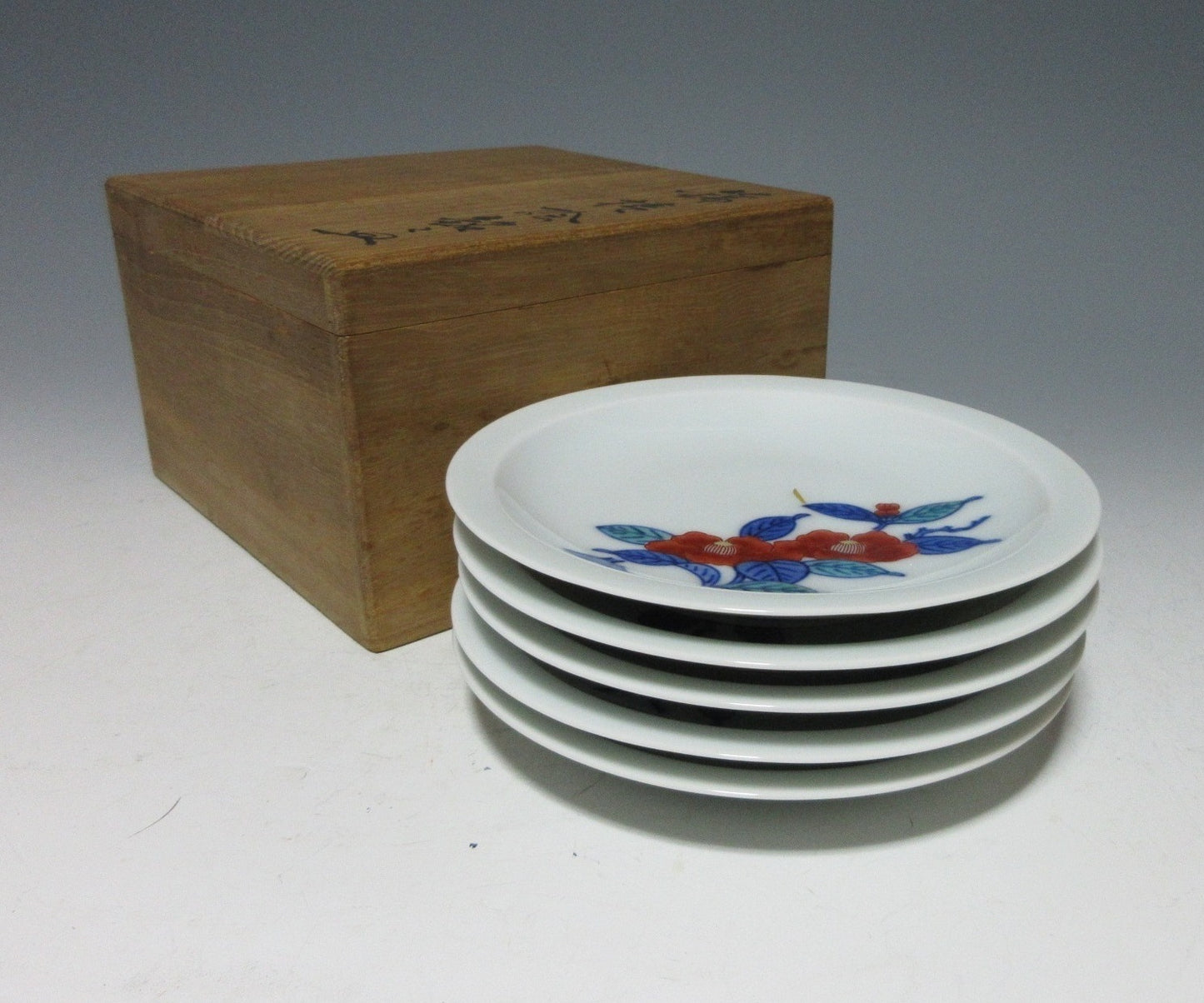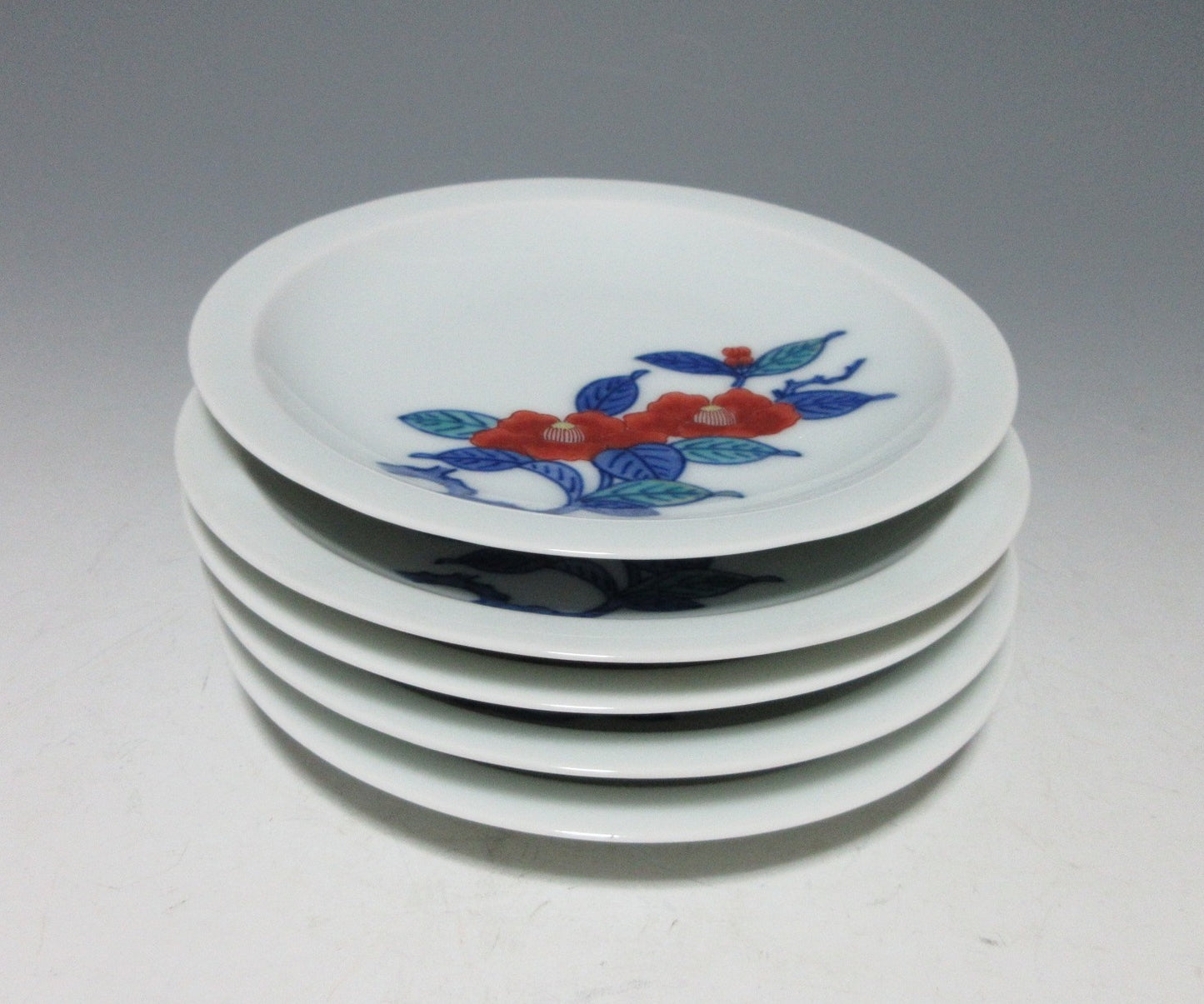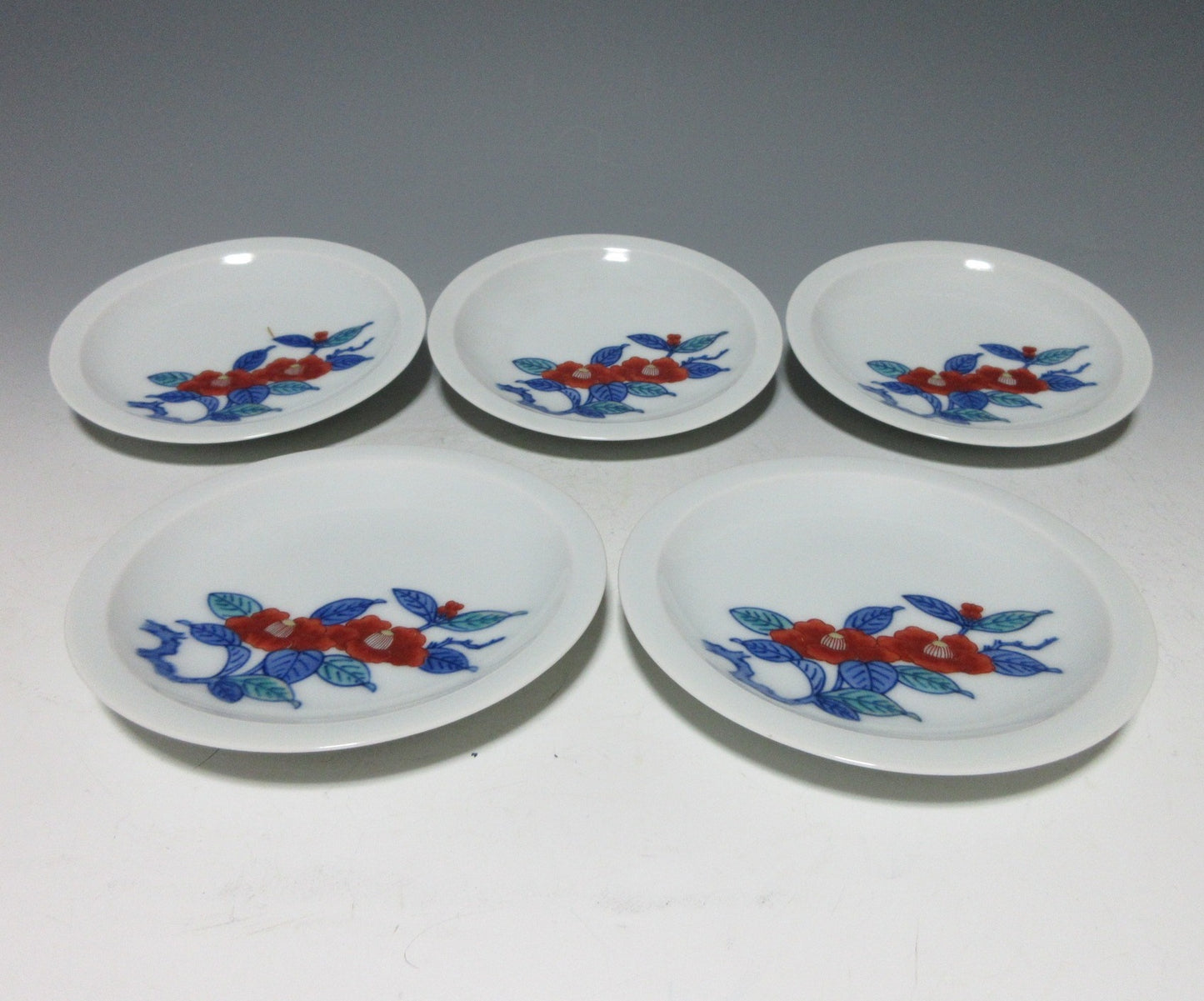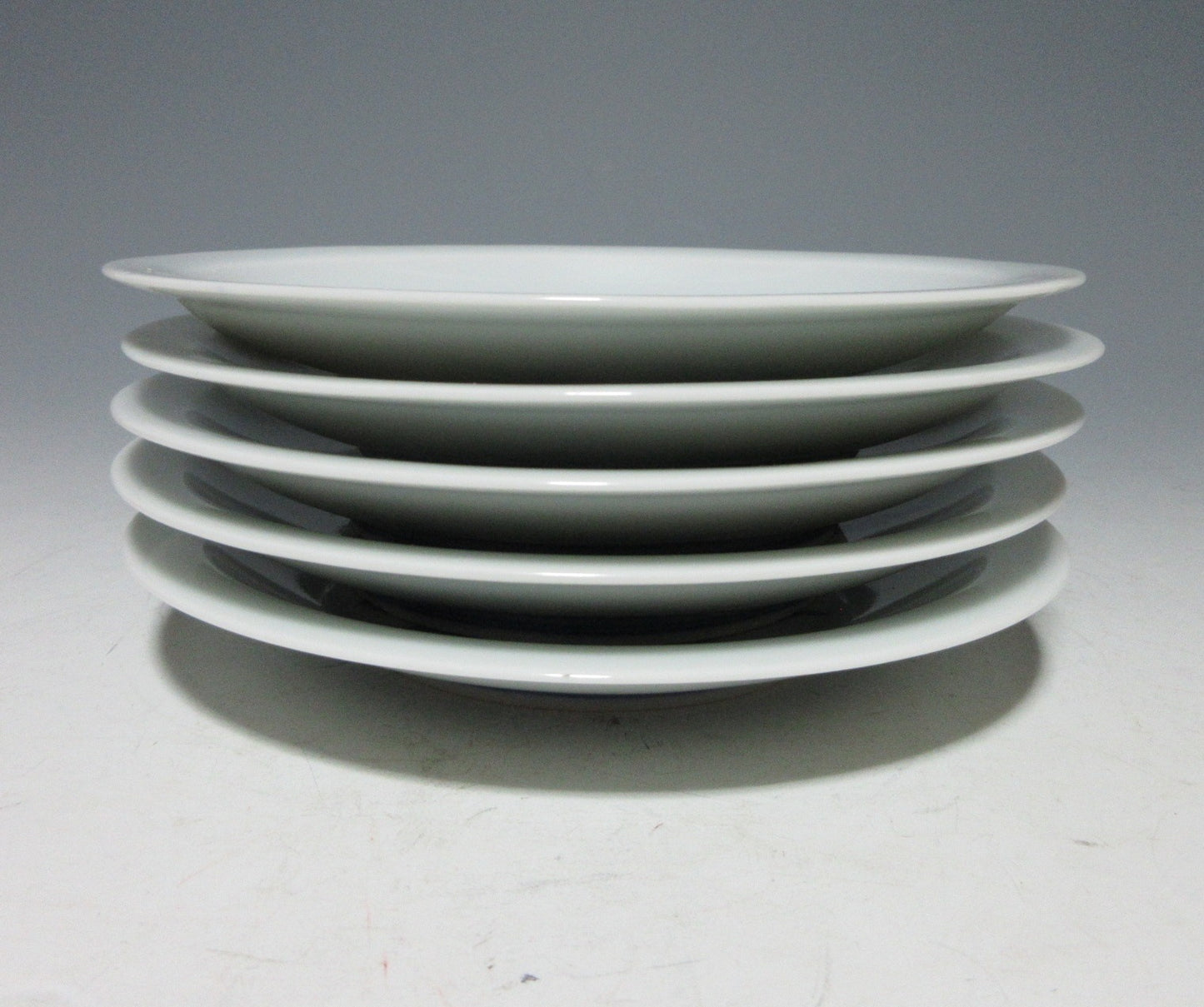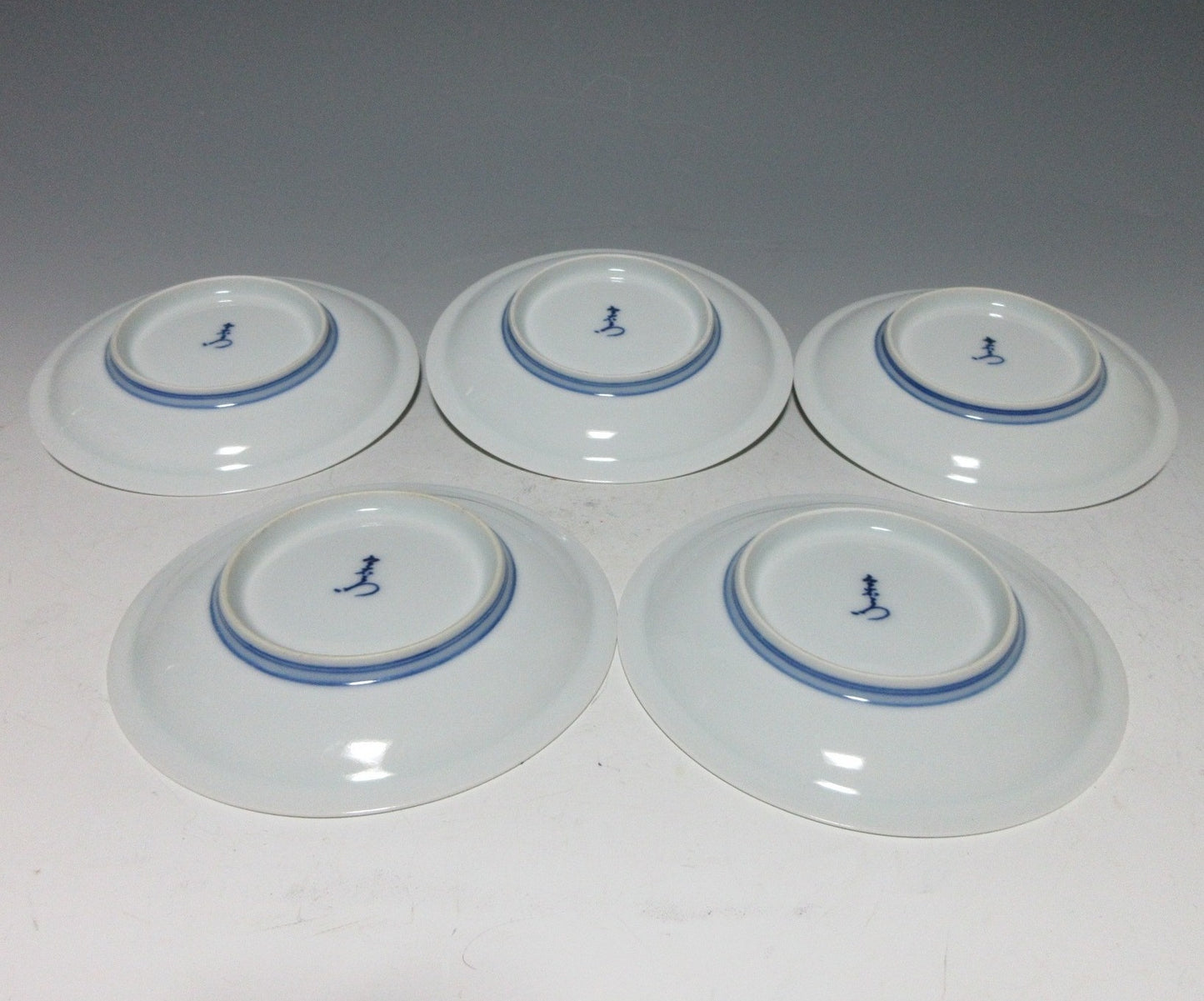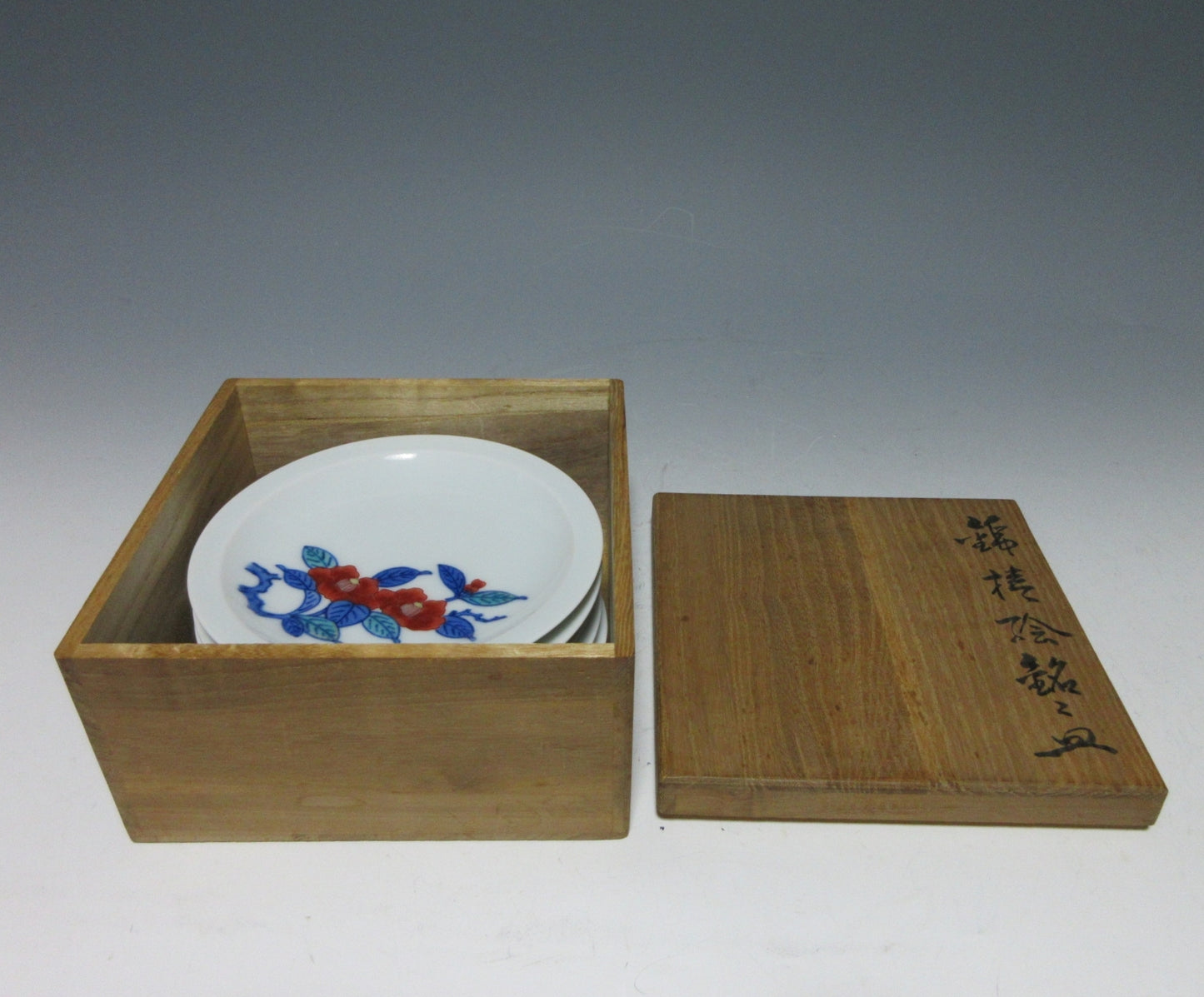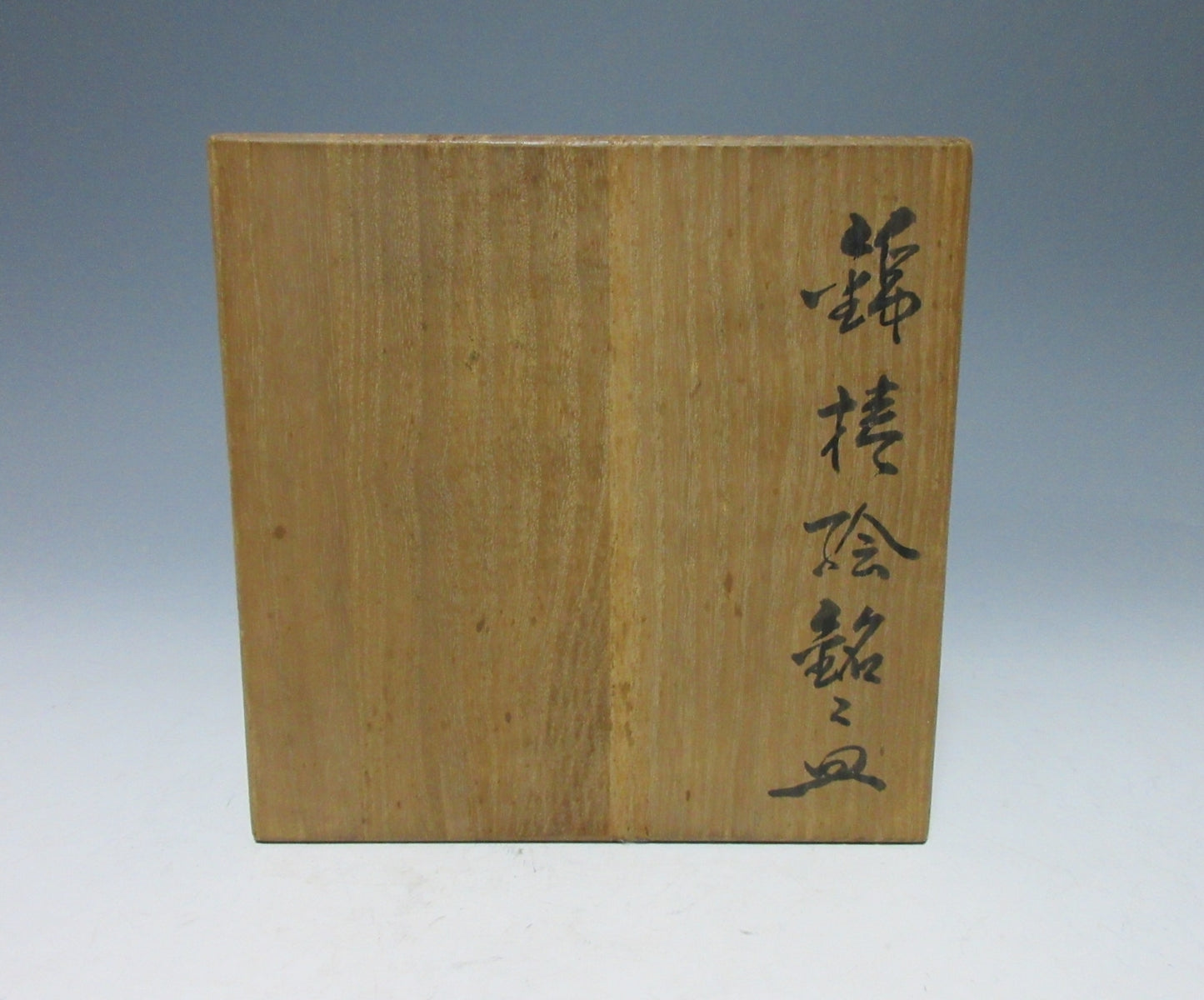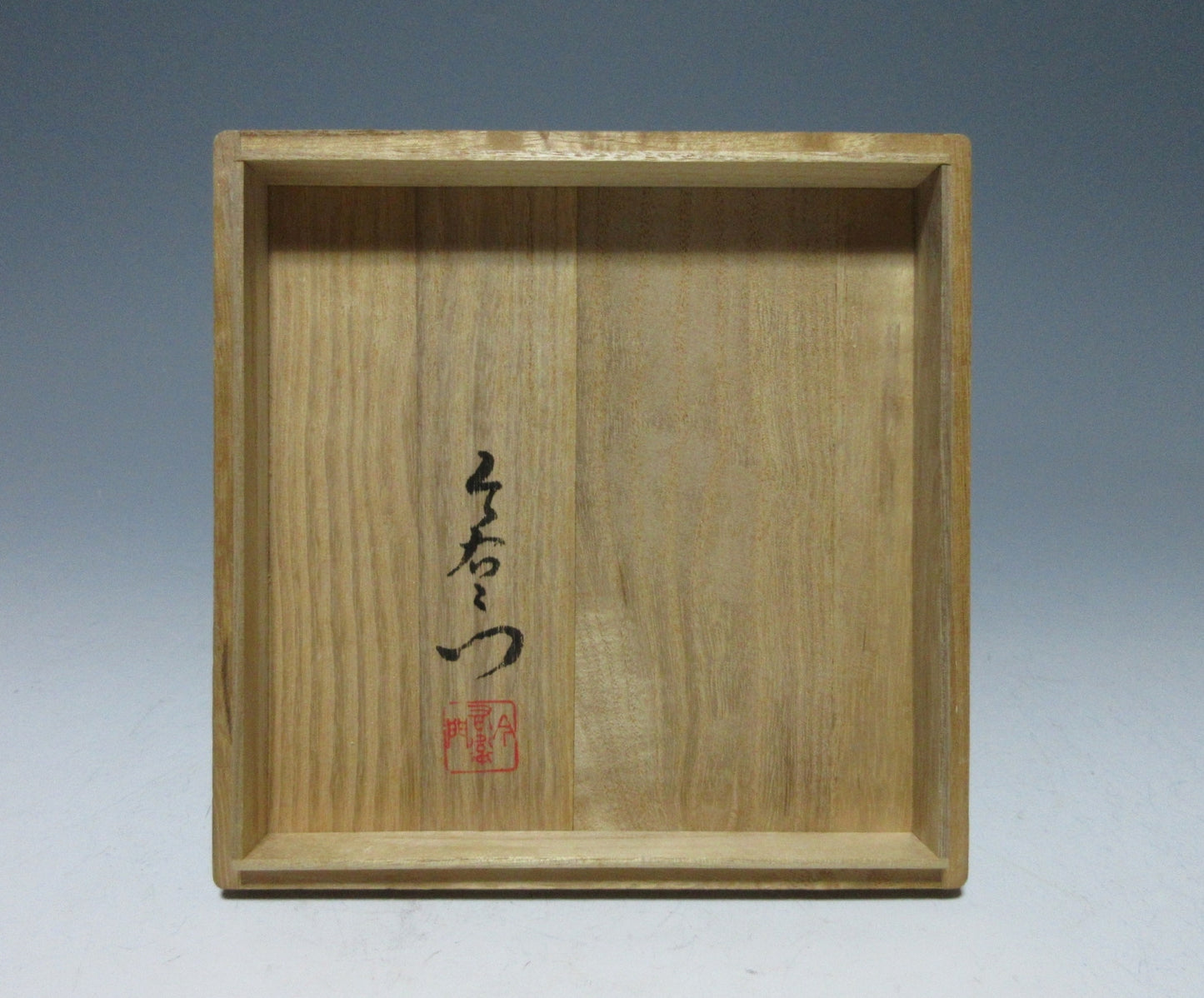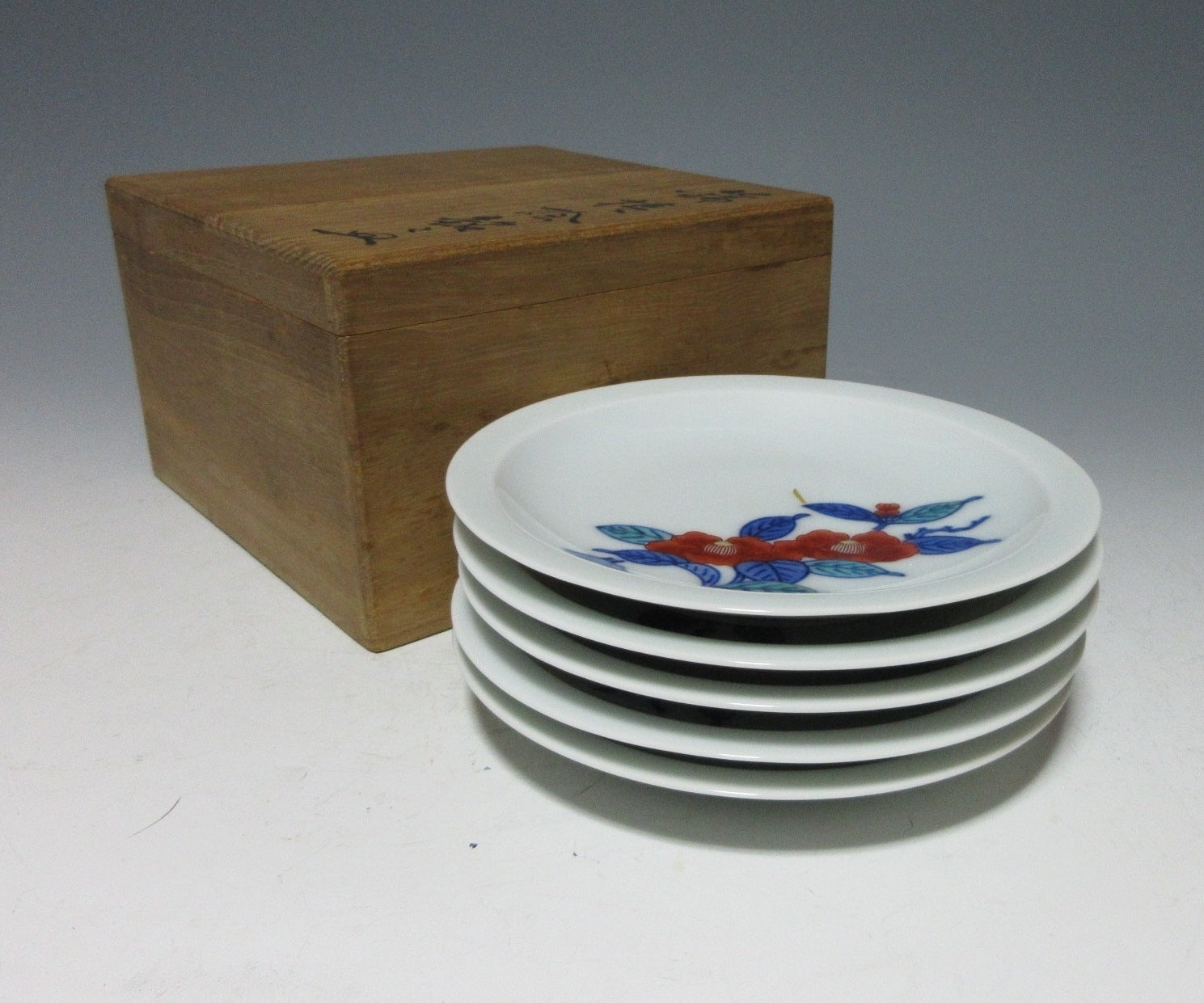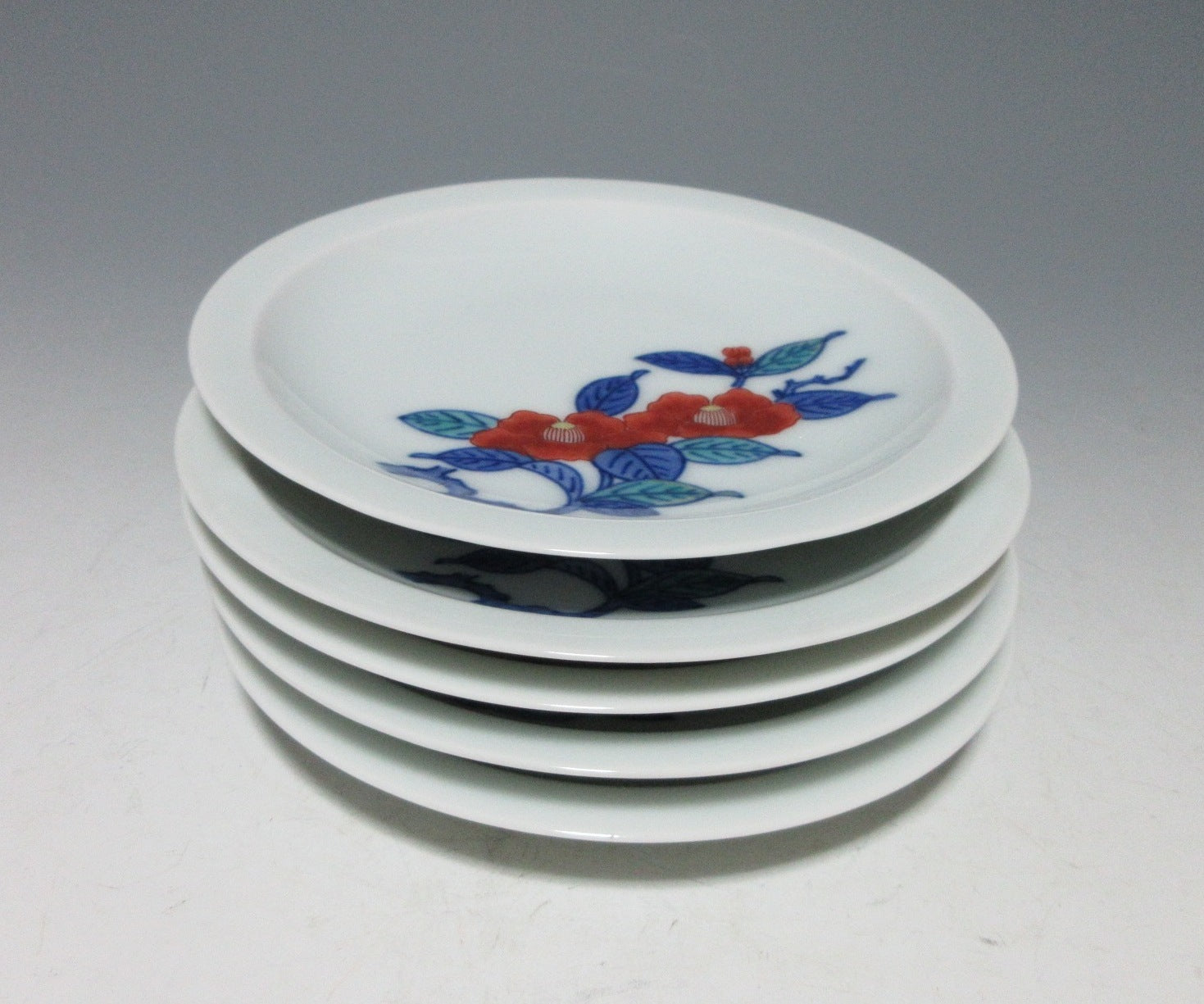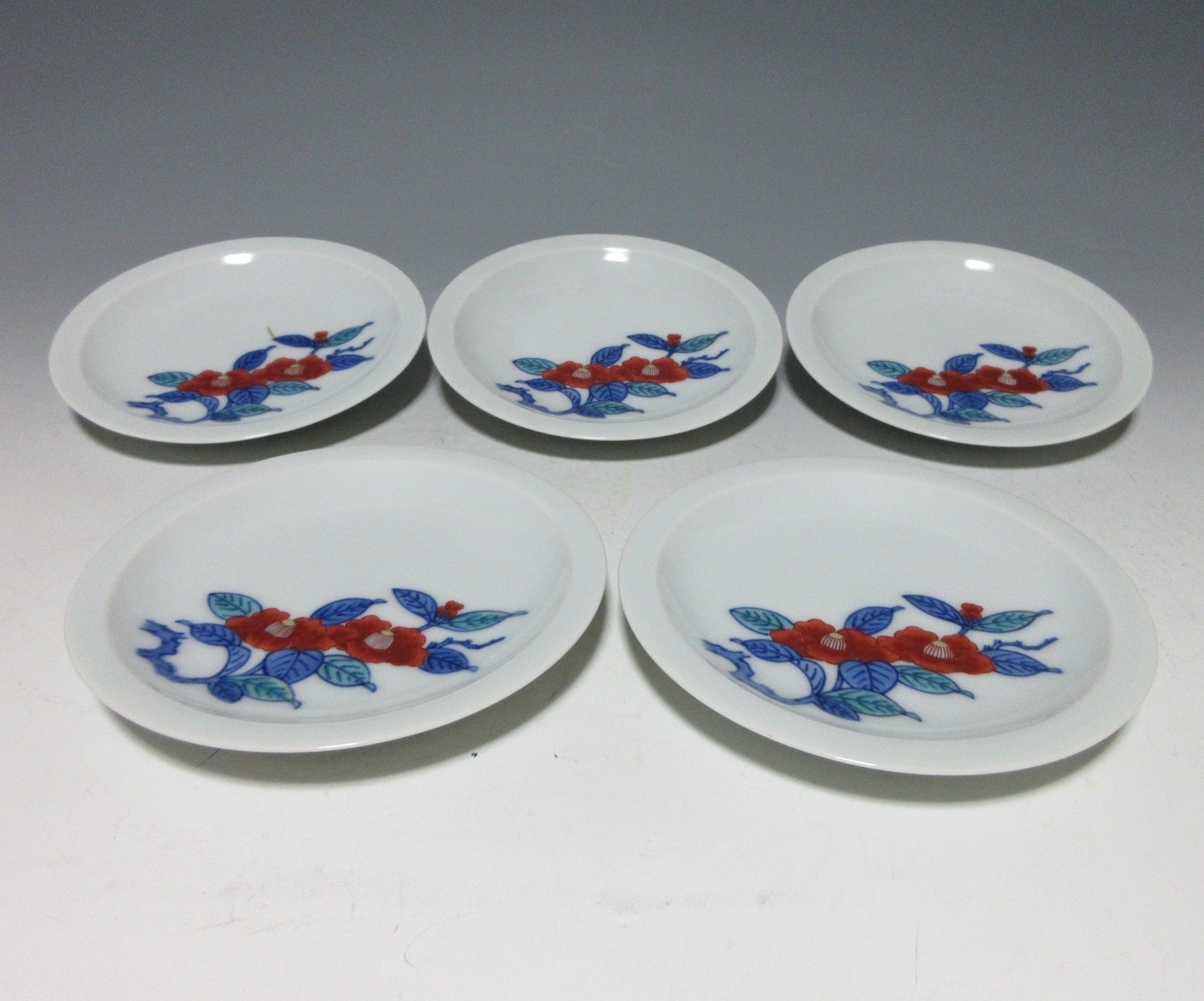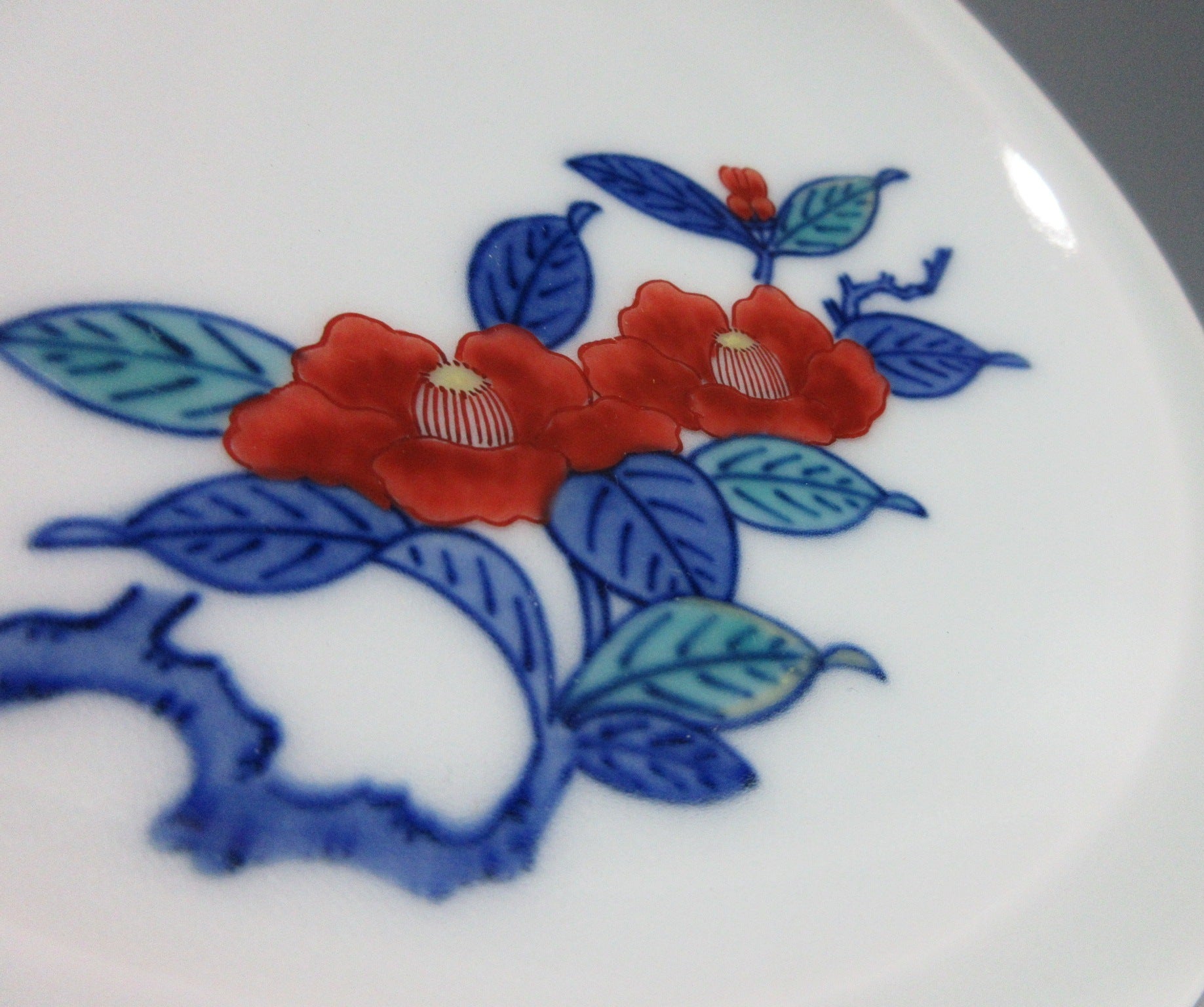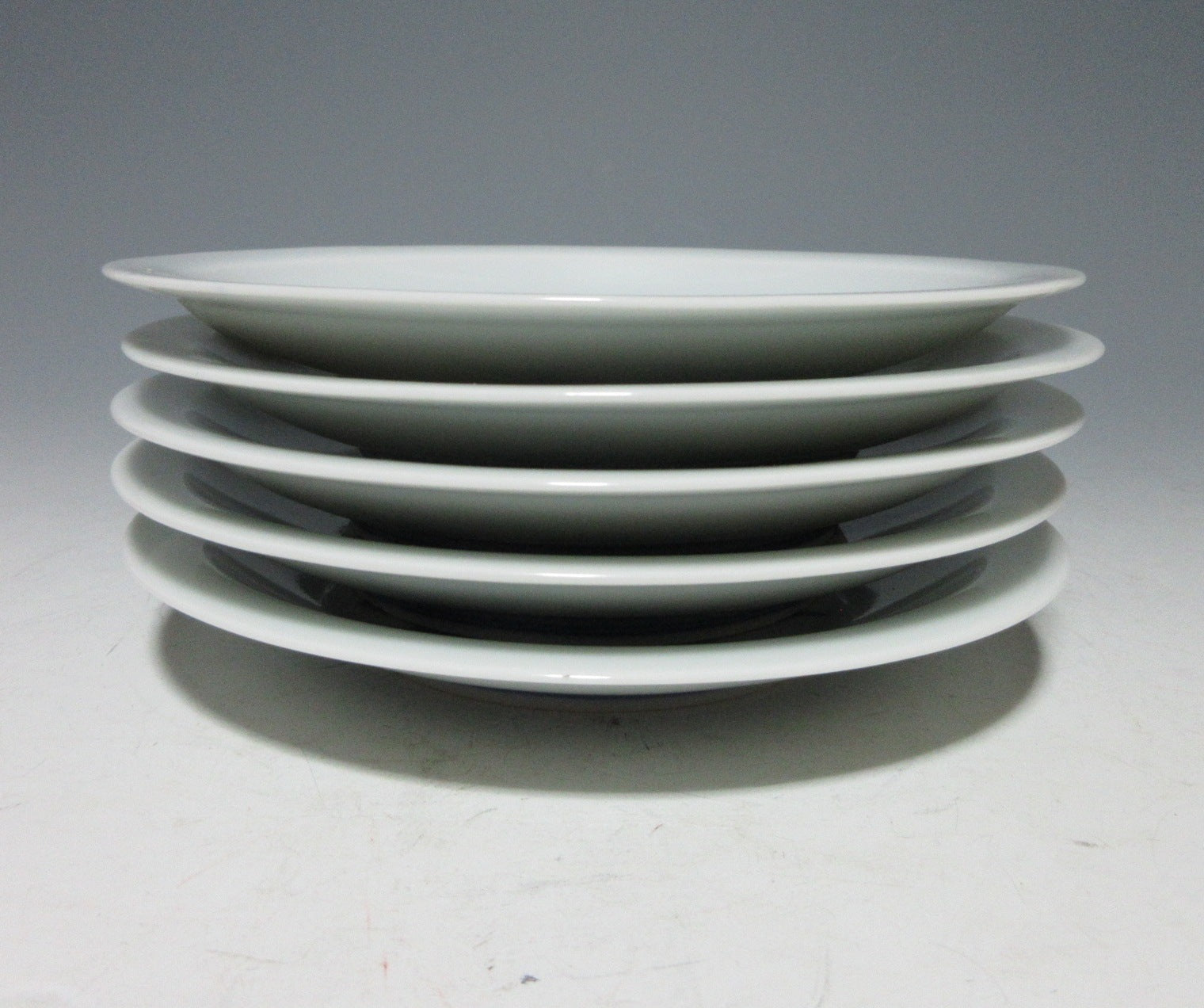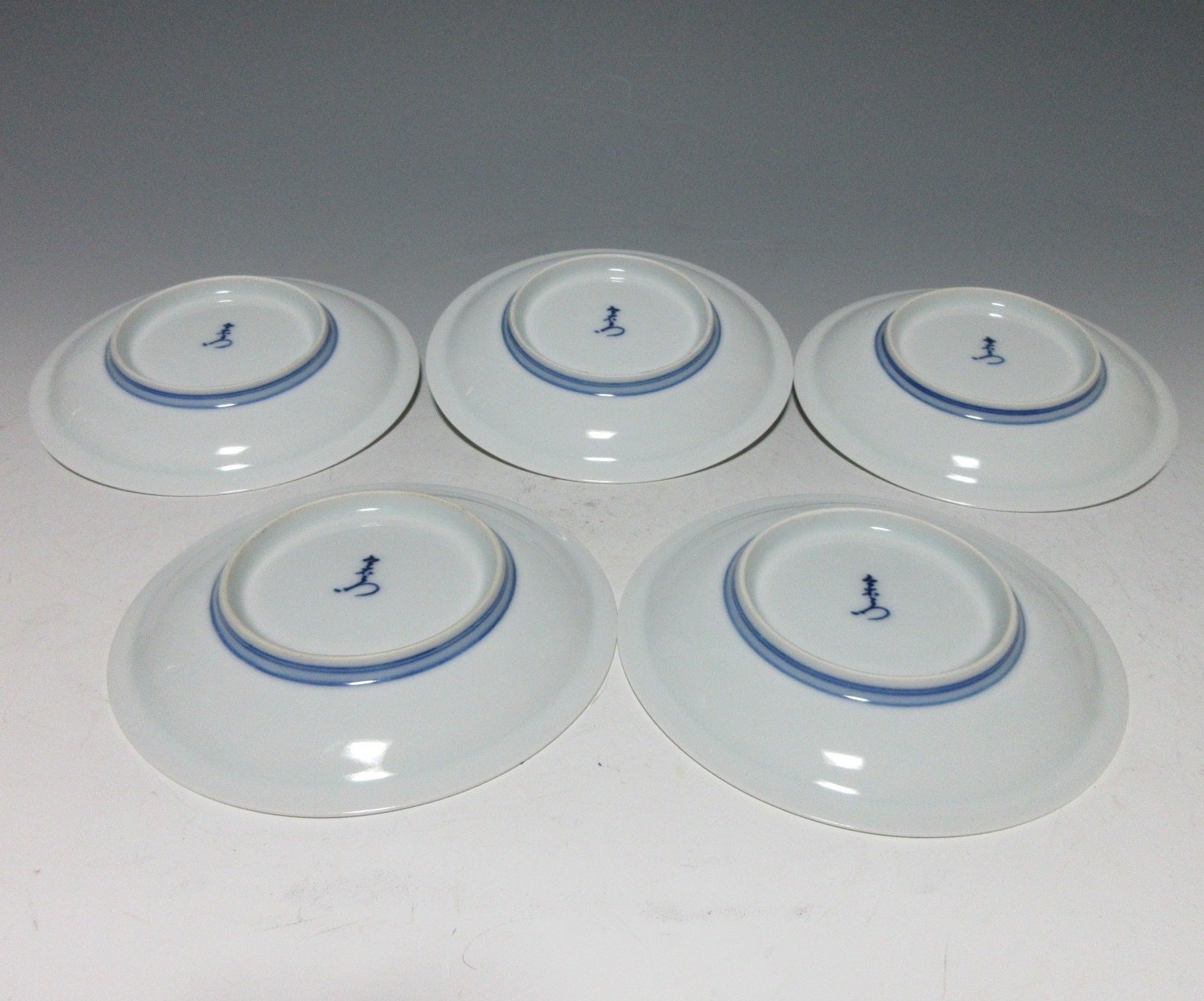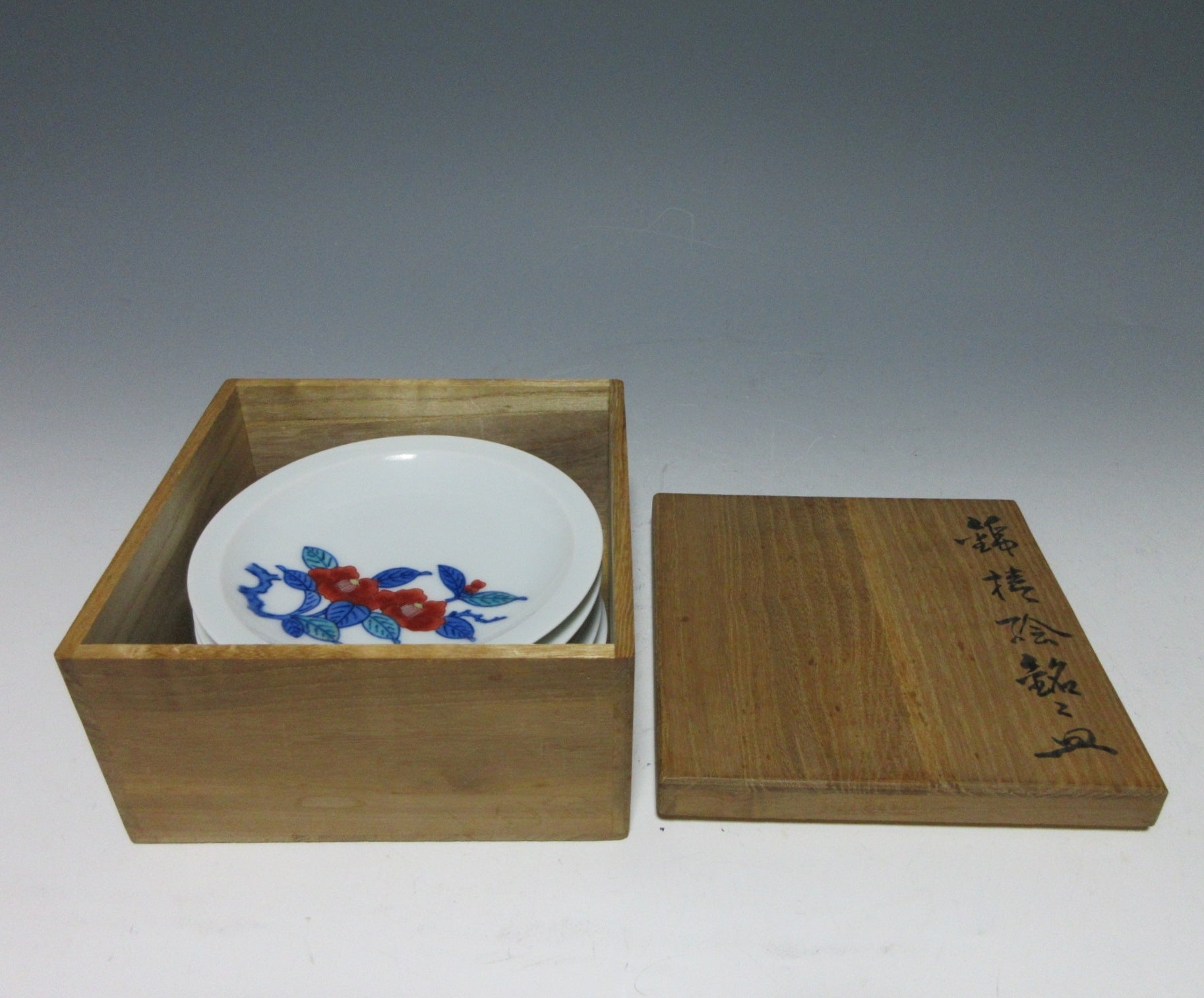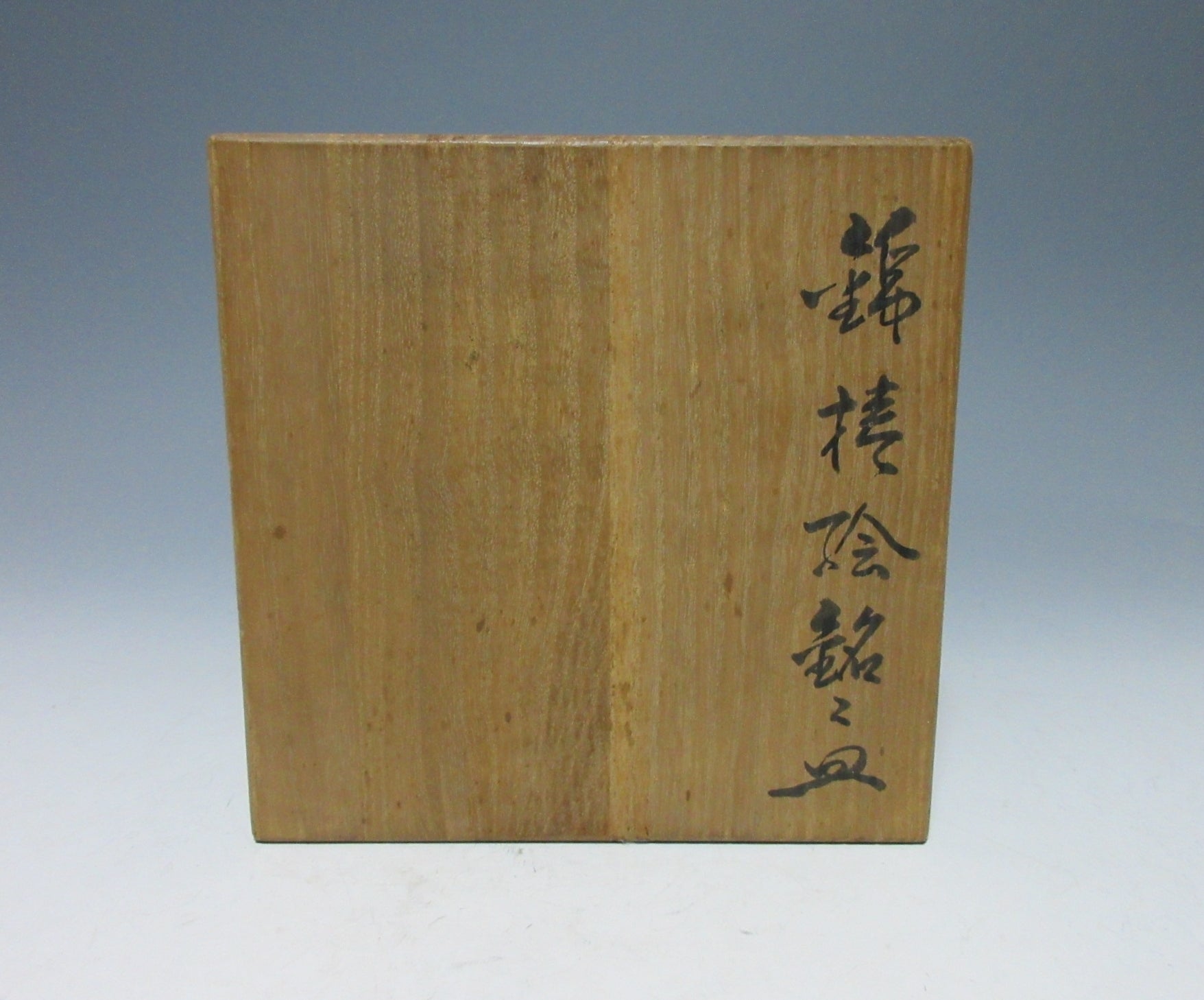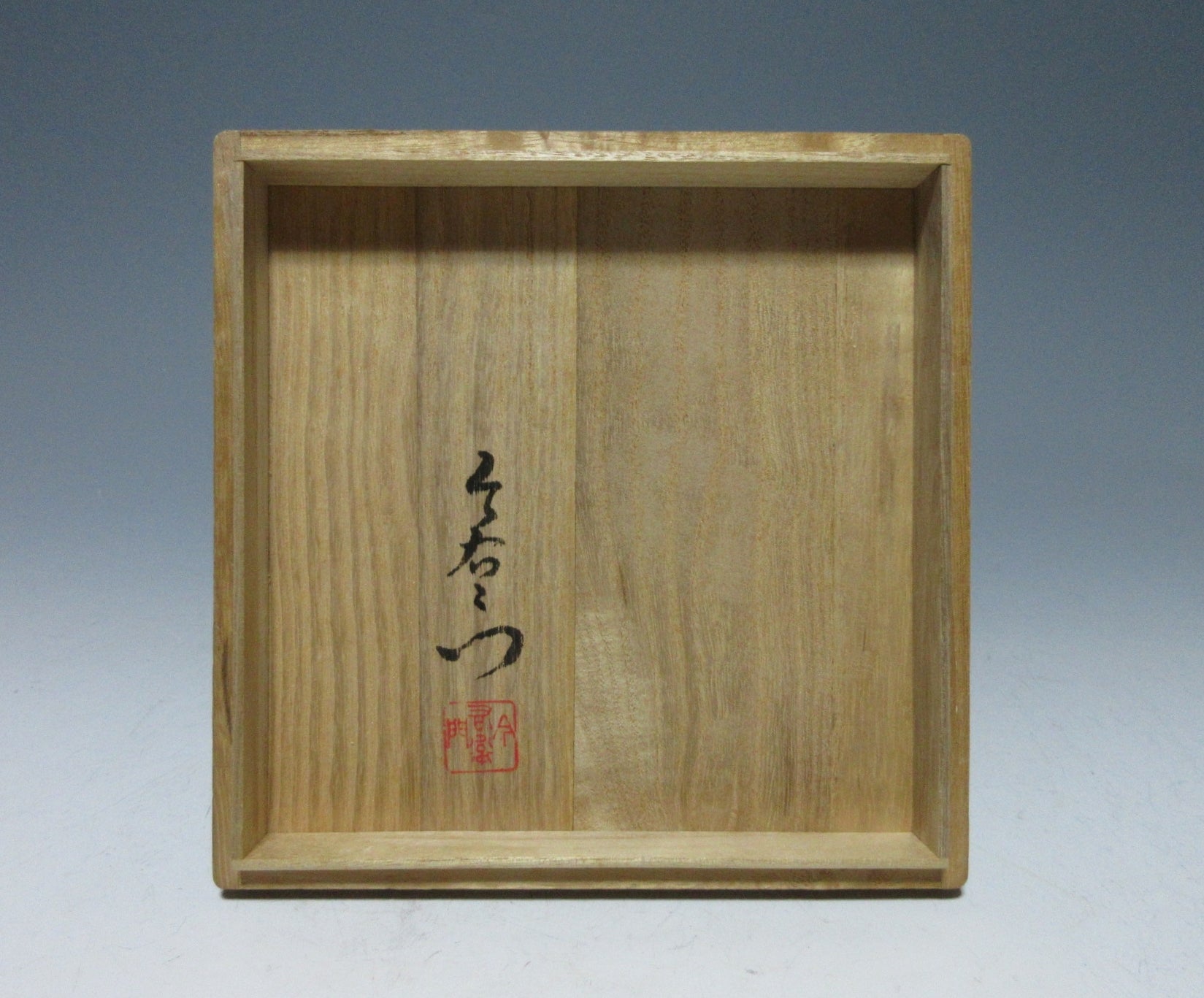Kominka Zakka
Imaizumi Imaemon XIII Iro-Nabeshima Tsubaki Plates
Imaizumi Imaemon XIII Iro-Nabeshima Tsubaki Plates
Couldn't load pickup availability
*SHIPPING IS SET FOR EMS EXPRESS TO ALL AVAILABLE DESTINATIONS FOR INSURANCE PURPOSES.
This listing is for a set of five Iro-Nabeshima plates made around 30 years ago by distinguished potter, Imaizumi Imaemon XIII. They are made of porcelain and each piece is decorated with hand-painted depictions of red tsubaki flowers over a milky white background. Red camellias are powerful in symbolism and they were popular with nobles during the Edo period. They symbolised a noble death among samurai and they admired for their ability to withstand the harsh cold of winter. The signature of the potter can be found on the back of each plate, and they come with their original signed wooden storage box.
Imaizumi Imaemon XIII (1926-2001) is a 13th generation master from one of the most important potter families in Japan. The family history dates back to the early Edo period, when Imaizumi Imaemon I was selected to decorate porcelain wares to supply Saga Castle. Lord Nabeshima established a kiln and Imaemon was invited to decorate porcelain pieces using colourful overglaze enamel, thus marking the birth of Nabeshima-ware. The Imaemon family have kept their techniques under lock and key for over 300 years, and they are now in their 14th generation. Imaizumi Imaemon XIII’s contribution to the family trade is the introduction of the fukizumi technique, which is the technique of spraying on the cobalt blue underglaze. He also developed the usuzumi technique, and this refers to the technique of spraying on light grey underglaze pigment before applying overglazes. He also combined the two techniques now known as fuki-gasane. In 1989 he was designated as a Living National Treasure for adding artistic elements to the traditional Nabeshima art form.
Iro-Nabeshima refers to coloured Nabeshima porcelain-ware. It is characterized by elaborate hand-painted motifs featuring flowers, birds, fruit, and plants. Hand-painted porcelain began in Arita in the 1600’s, under strict control of the Nabeshima clan. Porcelain production at this kiln later developed into refined ceramic ware known as Iro-Nabeshima. After the Meiji restoration the technique of overglaze painting with red pigment was established. This type of porcelain-ware typically features blue, vermillion, yellow, and green glazes; sometimes combined with blue underglazing and gold. Another interesting feature of Nabeshima-ware is the use of space, skilled craftsmen strike a perfect balance between the richly coloured motifs and milky white base.
Sizes
Box: H.11.5cm (4.5”) x 19cm (7.4”) x 19cm (7.4”)
Plates: H.2.2cm (0.8”) x Dia.16.7cm (6.5”)
Condition
The entire set is in excellent condition and is unused, the box however is a little spotty.
THESE ARE SHIPPING ESTIMATES BASED ON THE CURRENT GLOBAL SITUATION
**Germany, France, Greece, Spain, Poland, Austria, Slovakia, Lithuania, Slovenia: NO SHIPPING. Very strict and expensive packaging laws in place and we are not licensed to send products to these countries. We have no plan to register at this time because the process is in some cases very expensive and complicated, plus each country has its own set of regulations and application process.
**USA, UK, Canada, Australia, New Zealand, Switzerland, Norway: EMS Express
**Asia: EMS Express
**Central Asia, Middle East, South Africa, Brazil, Mexico: EMS Express 10-15 days.
**Russia: No shipping methods available.
Share
